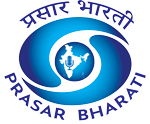Northeast India often makes headlines due to conflicts and political tensions because of the rising influx of migrants within the states. We have heard of the case of Tripura and the heavy news of instability coming from Manipur very recently. For the Northeast region, hoisting several indigenous groups rooted in unique cultures and traditions carrying the history of civilizations, the influx of migrants within the state often is not only perceived as a threat but also comes with huge sacrifices indeed! Migration, by definition, simply means movement of people from one place to another. There can be various factors leading to migration, such as better opportunities for work and livelihood, conflict, and even large-scale persecutions. It can be either internal migration within a country or international migration between countries. The very act of migration often is facilitated by an increase in transport, feasible communication links, urbanization, and industrialization.
While there has been a lag in the study of migration as far as Northeast India is concerned, a lot of troubles and tension brimming around the region are also catalyzed by rapid increases in migration. The constitution of India gives its citizens the right to move freely in any part of the country. A proper analysis of migration patterns also helps study the momentum of changes taking place economically, socially, and politically in the country. It also acts as a future path to understand population redistribution in the country alongside considering factors of the number of births and deaths.
Going back to the official status regarding the stance of migration, decades of understanding migration patterns have been considered by considering key changes of birthplace as the factor. Before 1951, a person was a migrant when he changed his birthplace district to another or state. Ten years later, since 1961, a person is a migrant if his birthplace is different from the place of his enumeration. A need to include last place of residence was mandated for the collection of migration data, and hence, since 1971, another ten years later, censuses have provided that a person is considered a migrant if either his place of birth or his last place of residence differs from the place of enumeration.
Northeast states often lack proper research and available data when it comes to reliable data on migration. Often only when tension arises out of the issue is when the country learns about its facets in the Northeast. The concern for the Northeast majorly is the problem of a huge influx of migrants from other states of India and immigration from other countries, especially Bangladesh, Myanmar, and even Nepal.
The Northeast region consists of the states of Arunachal Pradesh, Assam, Manipur, Meghalaya, Mizoram, Nagaland, Tripura, and Sikkim. While India as a country accounts for 37% migrants in its total population, the Northeast, seemingly the most static region, no doubt has seen various changes in the past decades. According to the census of 2011, 14.9 million migrants, accounting for about 33% of the total population of the Northeast, are migrants.
With a significant increase in number from the 2001 census, the Northeast region has been a pooling region for migrants increasingly. For example, the state of Arunachal Pradesh is the only state in the Northeast experiencing a whopping percentage of 45% of total migration, much higher than the national average. Considering 22% of the total migrants of Arunachal Pradesh constitute interstate migration, the state of Tripura experiences the highest number of immigrant populations, accounting for 72% of the total migrant population. The Northeast region constitutes hundreds of indigenous communities sharing a unique history of civilization, culture, and traditions. With the alarming influx of migrants, efforts to assert regional and indigenous identities have become increasingly prominent.
The agency of migration often leads to assimilation. This assimilation often contributes to subversive population polarization, often leading to conflicts arising out of political aspirations and insecurities. A huge influx of migrants poses a certain threat for a region like the Northeast with small indigenous communities that can get easily engulfed by the majority migrants. This will mean the extinction of a facet of civilization having dynamic culture, traditions, and practices. It will mean rooting out centuries of heritage, wisdom, and knowledge from the face of the earth.
Other than concerns of an increase in crime and conflicts, sensitive regions such as the Northeast, bordering several counties often brimming with a lack of trust against the Indian government, can fall into the hands of bigger powers who can use them as leverage to incite turmoil by pitting one against another, therefore bringing about security concerns for the country.
As far as interstate migration is concerned, there has been an overwhelming anxiety built across Northeast states due to the heavy influx of migrants from other states of the country. Around 42% of migrants in the Northeast region are from various states of Bihar, West Bengal, Jharkhand, the Andaman Islands, Odisha, and even Sikkim. Major states, except for Tripura and Assam, have a high number of migrants from other states. And the Inner Line Permit System has thus become a common call of approach to take up in the region to keep check on this interstate migration.
Back during the British era, a policy was established by the British to regulate their stronghold of the North-East Frontier; it was also the first policy in the region referred to as the Bengal Eastern Frontier Regulation or the Inner Line Regulation of 1873. Although the policy was established to secure the region for commercialization largely, after the independence, the government of India relieved the policy by integrating several changes into the Inner Line Permit system in the 1950s.
By simple understanding, the ILP is a travel document issued for visiting any protected or restricted areas of the country. It can be of several types, one issued for tourists and another for extended stays, mainly for work. The system is introduced in regions that need protection against any form of exploitation in the name of travel and tourism. To ensure that the indigenous element, including the social, cultural, customary laws, administration of justice, religion, land ownership, etc., stays protected, the permit with a limited timespan of stay, after which a renewal is required, also serves as a method to control the influx of migrants. The documents are issued by state governments that have implemented the ILP system, and currently in the Northeast, three states—namely Arunachal Pradesh, Manipur, Mizoram, and Nagaland. Although ILP has been demanded in almost all the states of the Northeast, states like Assam, Meghalaya, and Tripura surprisingly have not implemented ILP so far.
While India has been taking up considerable efforts to check interstate migration towards the Northeast, it has been lenient about its policy towards the immigrants. With its welcoming approach, the rise of immigrants in the Northeast also needs a serious check. Immigration or entry of foreigners is governed under the 1958 Foreigners (Protected Area) Order under the Foreigners Act of 1946 and the Passport (Entry into India) Act 1920. Immigration, especially from countries like Bangladesh and Myanmar, is posing an equal threat if India’s stand for indigenous safeguard is considered. States like Assam have considered adopting the NRC, or the National Register of Citizens, to keep on record genuine Indian citizens. This record has been monitored and mandated by the Supreme Court in 2014.
The NRC, with its nodal agency Registrar General and Centre Commissioner, aims to document legal citizens in Assam residing as of March 1971. This identification was also promised under the Assam Accord signed between leaders of Assam and Prime Minister Rajiv Gandhi. Following this assurance alongside the Citizenship Act of 1955, updating of the NRC to identify illegal immigrants and help deport them was therefore carried out in spite of the many concerns of the NRC regarding documentation verification and discriminatory criticisms being highlighted.
India’s Northeast has significantly evolved in trade and development, and in return has variably espoused concerns about interstate migration, but major states of the region, except Arunachal Pradesh, Nagaland, and Meghalaya, have a higher number of immigrants than the national average. The highest is Tripura, with 72% immigrants, followed by Mizoram, Assam, and Manipur. Although there has been a significant slowdown in the inflow of immigrants after 2011 as compared to 2001, community concerns still pose a huge threat involving aggressive identity assertion leading to socio-political conflicts arising out of insecurities to seek political power and resources.
Therefore, a mass call for NRC to check illegal immigrants has become a movement for the region and the rest of India too. A fair understanding of migration in the Northeast and its concerns should also involve looking into the outflow migration from the region owing to a lesser number of opportunities in the region. Manipur and Assam have the highest number of out-migration. Manipur has the largest number of outflows per inflow, while the state of Assam has a balanced outflow per inflow. Other states have significant gains in the number of migrants. But what is significantly evident in the migration of the Northeast is that when the momentum of migration is often alarmingly ill-balanced, we often find instability. Tripura sets a big example with the tension arising since the late 1990s, with political and administrative space taken up largely by immigrants pushing the indigenous people towards the periphery.
Manipur’s instability today also stems from huge concerns about illegal immigration from the neighboring country Myanmar. Hence, if India’s genuine concern is to protect indigenous rights, uphold social justice, and address national security concerns, NRC and ILP hand-in-hand and not individually can be a way forward. But these policies by far should ensure the discrepancies in them are not overlooked, and human rights are upheld through inclusivity and not marginalization and discrimination.
Lastly, these policies should be kept in check to not completely isolate the Northeast from the rest of the country or restrict the region completely through a comprehensive, fair, and transparent approach so as to keep the spirit of India’s democracy intact.
(Chanamthabam Ronika Devi is an enterprising professional with a strong leadership, communication, and creative writing background)














